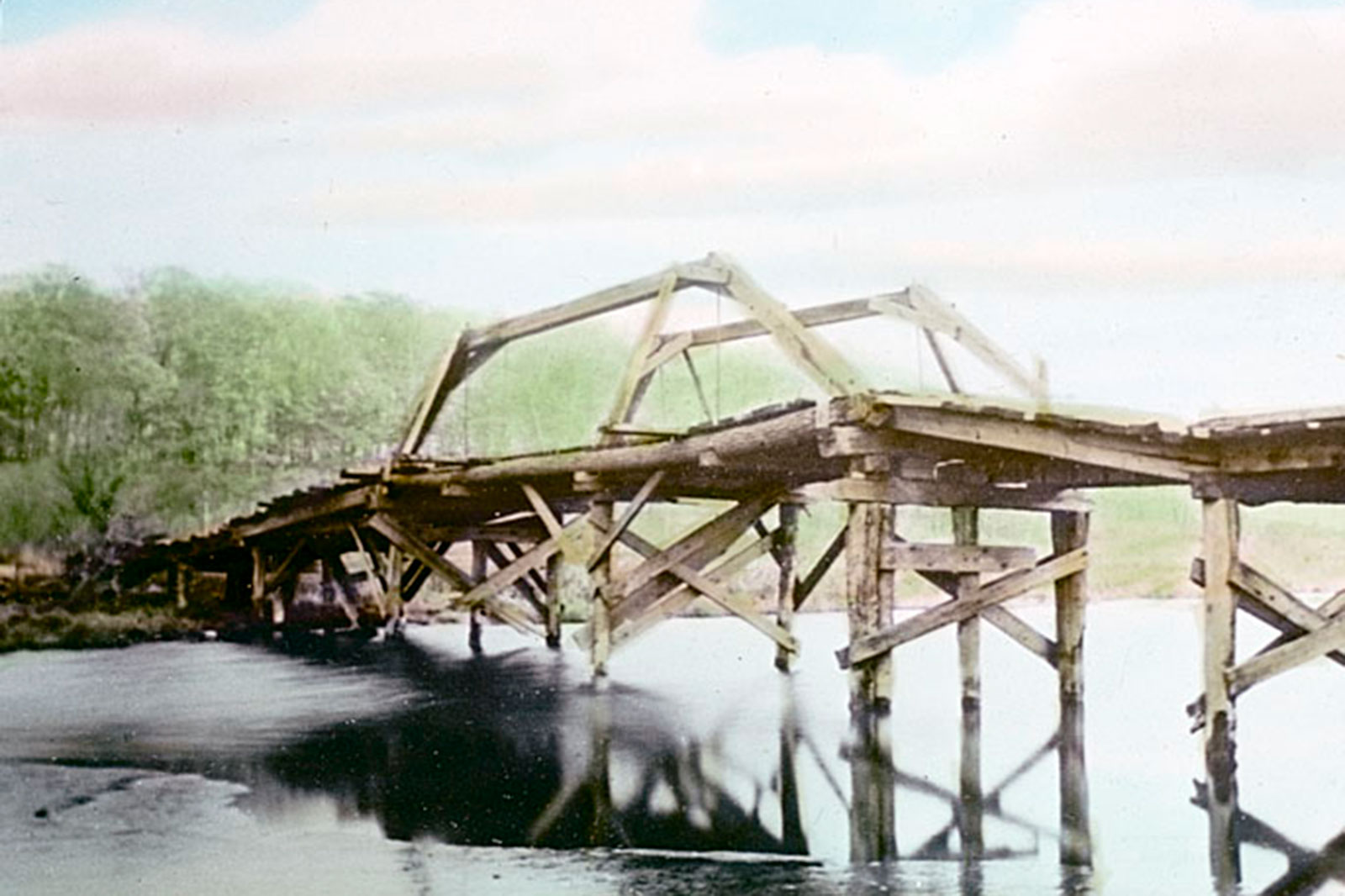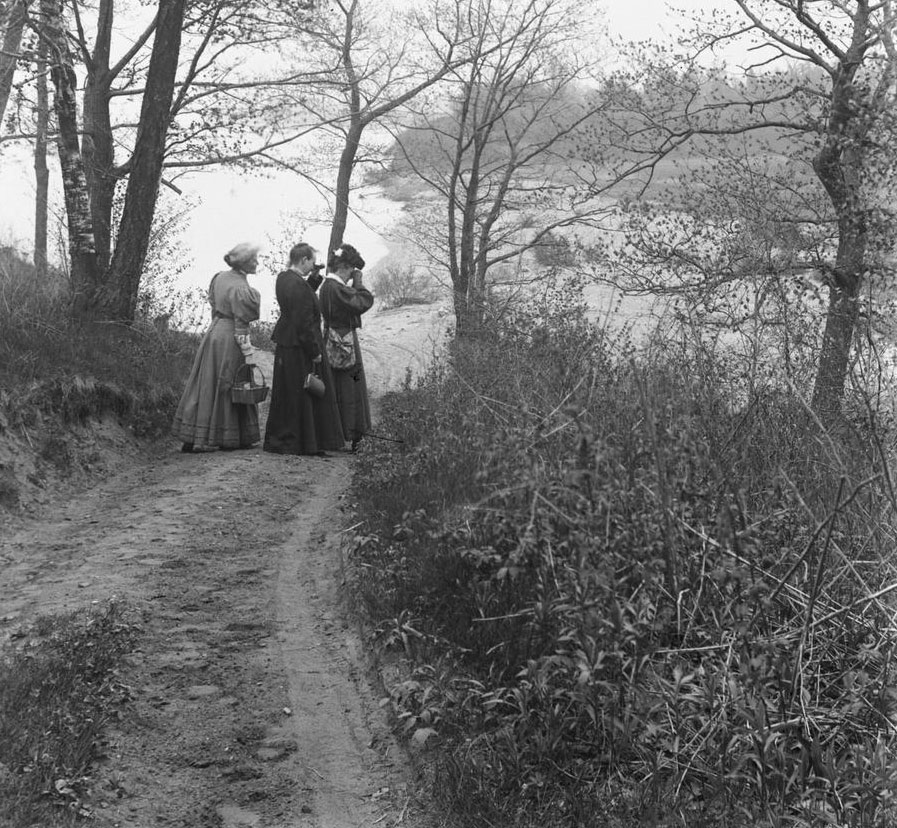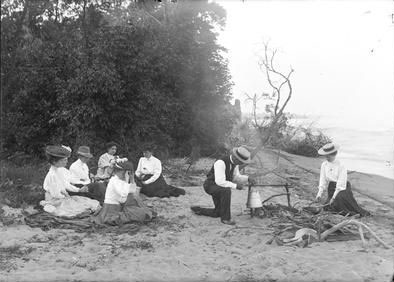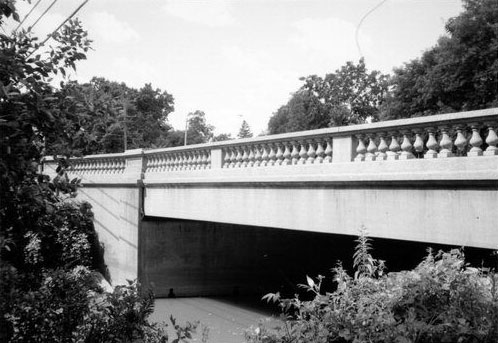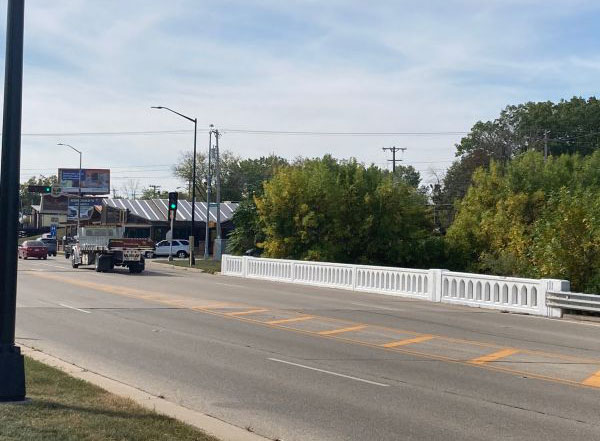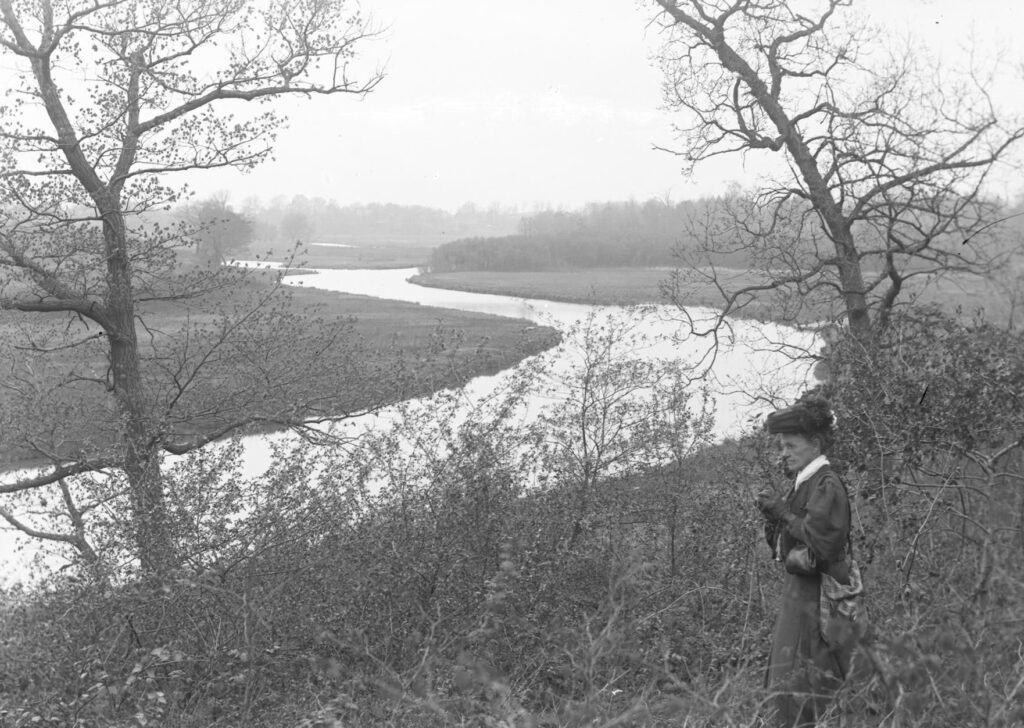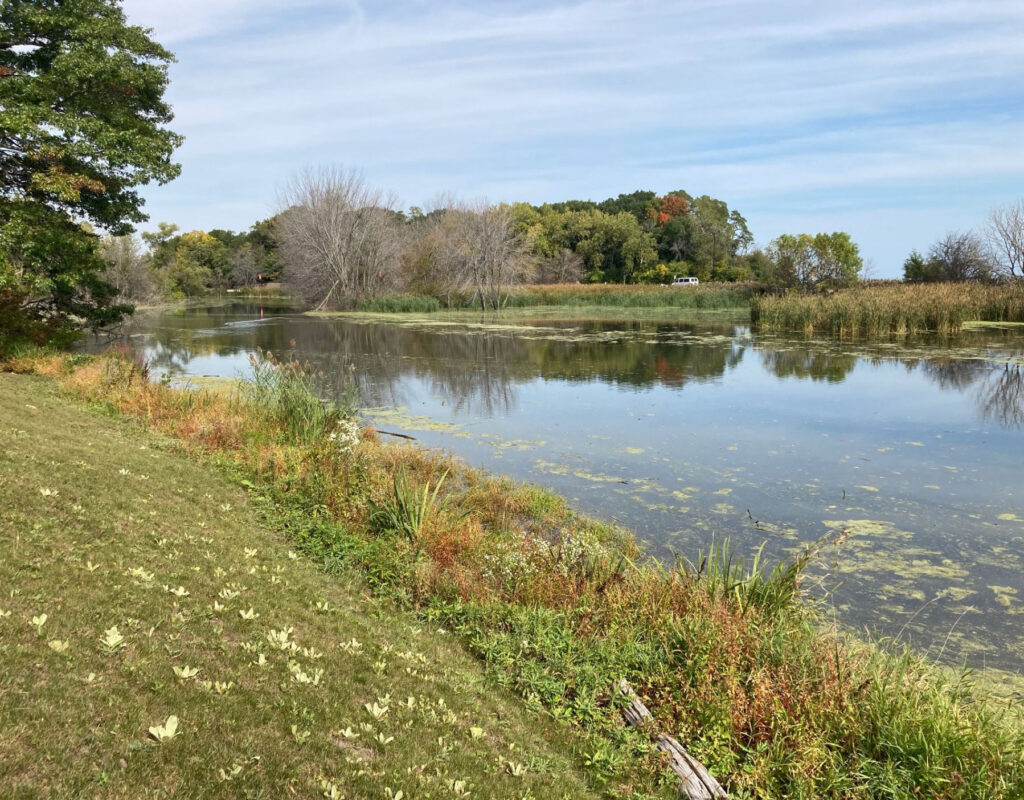As you drive north along Sheridan Road toward Carthage College, about midway between Seventh Avenue/La Fogata and Carthage, you pass Alford Park Picnic Area No. 1 on your left. That spot was once the high ground of Jacobs Island, a long-ago recreation area on Kenosha’s north side.
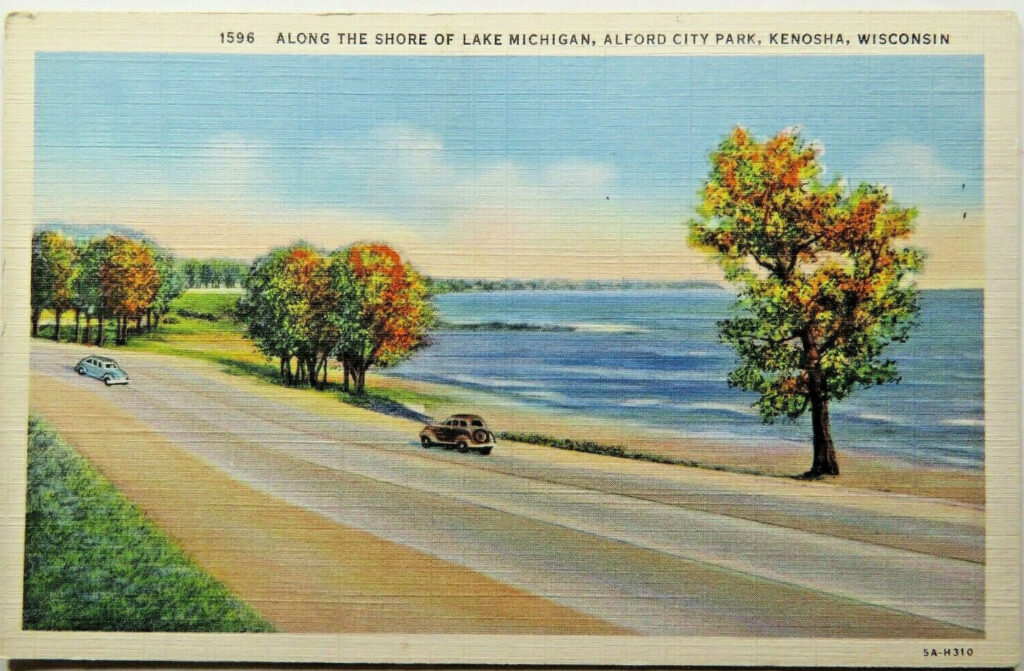
Jacobs Island was once one of three islands along Kenosha’s Lake Michigan shoreline, one or two of which are still around.
From downtown going north, First Island became known as Washington Island and later Simmons Island. Second Island, with its oak grove on the high ground, became known as Jacobs Island, and that area is now part of Alford Park, although the island is gone. The oak grove on Third Island, no longer an island, used to be Alford Park Picnic Area No. 5 but lives on as the site of Carthage’s Oaks Residential Village.
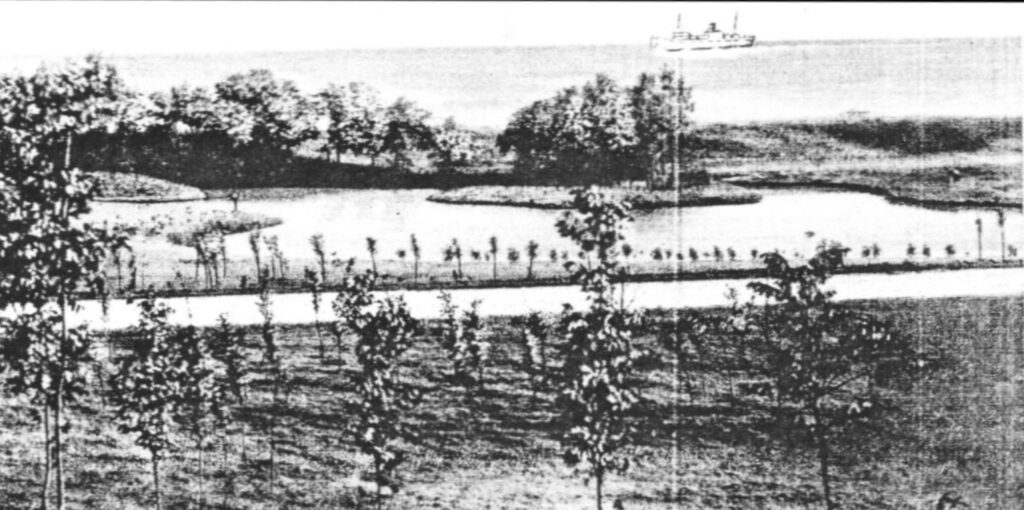
In the late-1890s and early-1900s, Third Island was separated from Jacobs Island by Willow Swamp. Most of the land in the area was marshland at the time.
Simmons Island was a tidal island, as were probably both of the other islands.
When the tide was low at Simmons Island, an isthmus connected the island to the mainland in the area that’s now the 45th Street boat launch.
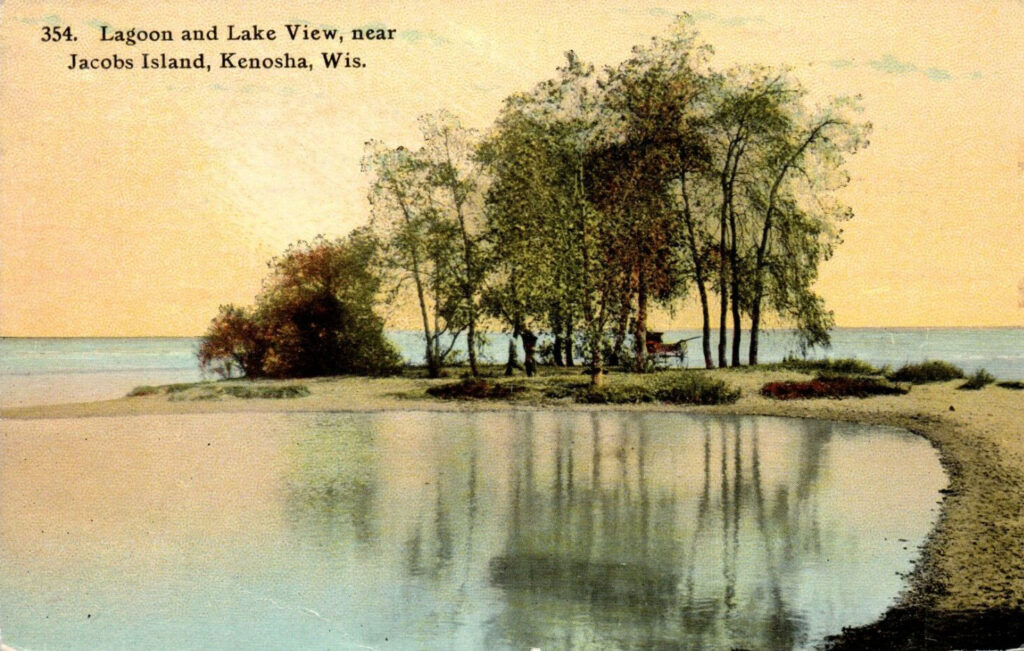
Peter Jacobs, a Kenosha entrepreneur, was the man behind the development of the middle island. Peter was the son of Mathias and Mary E. (Meyers) Jacobs, both German natives, who landed in Kenosha in 1846. The family first lived and farmed an area on Plank Road (60th Street) near today’s I-94.
Peter was born on March 29, 1854, the fourth of nine children. About that time, Mathias switched gears from farming to wagon-making. Around 1858, he built a house on what is now the corner of Sheridan Road and 47th Street (possibly 4700 Sheridan, which dates to the same era), and Peter attended St. George’s Parochial School (now St. Elizabeth) for a couple of years.
Peter started a match factory in 1876 but was run out of business in 1879 by the match trust. Who knew there was such a thing?
He married a cousin, Barbara J. Lennartz, that year, and the couple moved to a home at 1003 48th Street, on the southwest corner of 10th Avenue, where they raised nine children. It’s not clear from city records if the current house at that address is the Jacobs residence or a newer structure.
Jacob’s next business venture was a flour and feed mill. The original location of that mill was just south of his home along 10th Avenue, and he subsequently opened a store at what is now 5604 Seventh Avenue to sell his products. The mill was demolished in 1929 or 1930 when The Milwaukee Electric Railway and Light Company (TMER&L) constructed an elevated right-of-way south of 45th Street that veered southeast toward downtown.
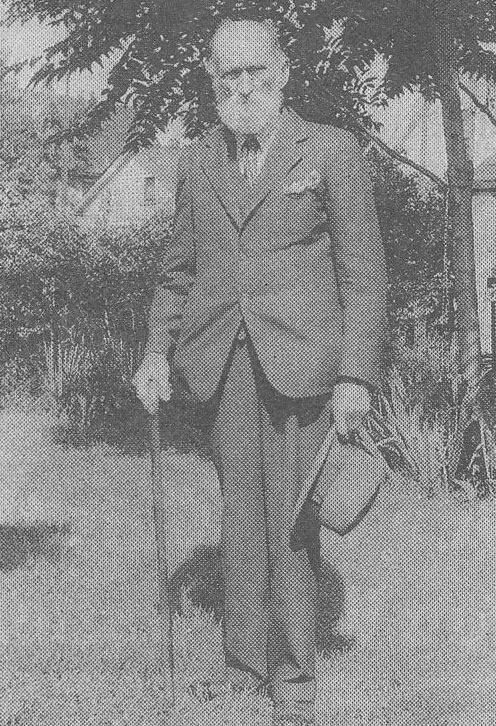
In 1882, Jacobs was elected Kenosha County Treasurer, and he also served as a city alderman for more than 20 years.
Sorry for the diversion. Back to Jacobs Island.
The first recorded owner of the land, in 1855, was a land speculator named Lee Claflin. Claflin must have sold the property to Lawrence University in Appleton, Wis., since the college then sold the tract to Mathias Jacobs, Casper Michael and Martin Lennartz, the latter Peter’s father-in-law, on Jan. 30, 1864. Later that year, Jacobs and Lennartz bought out Michael’s land.
At the time, there was no road along the beach nor a bridge to the mainland. Peter’s father and father-in-law sold the land to Peter in 1887, and the younger Jacobs launched a sand and gravel company on the site and later built a pair of ice houses. The parcel extended from just north of the Pike River mouth to the north end of St. George’s Cemetery.
Twelve years later, in 1899, Peter formed an investment company with $1,000 individual contributions from himself, Dr. N.A. Pennoyer, Clarence Snyder, W.W. Strong, W.H. Crosby of Racine, H.M. Wallis of Racine, Dr. H.B. Favill of Chicago, Charles Quarles of Milwaukee and three others under the corporate name of the Island Company. The group attempted to subdivide the land into 32 home lots, most with either lakefront or riverfront views.
Around 1890, Jacobs built a wooden bridge that connected to a road that ran along St. George’s Cemetery, probably following the same path as today’s Sheridan Road truck route, which runs west of the cemetery. The very homemade-looking bridge ran downhill from the cemetery and crossed Pike River from the mainland onto lower ground that Peter had purchased as a right-of-way. That bridge is well documented in old Kenosha photographs and postcards, with one image dated 1915.
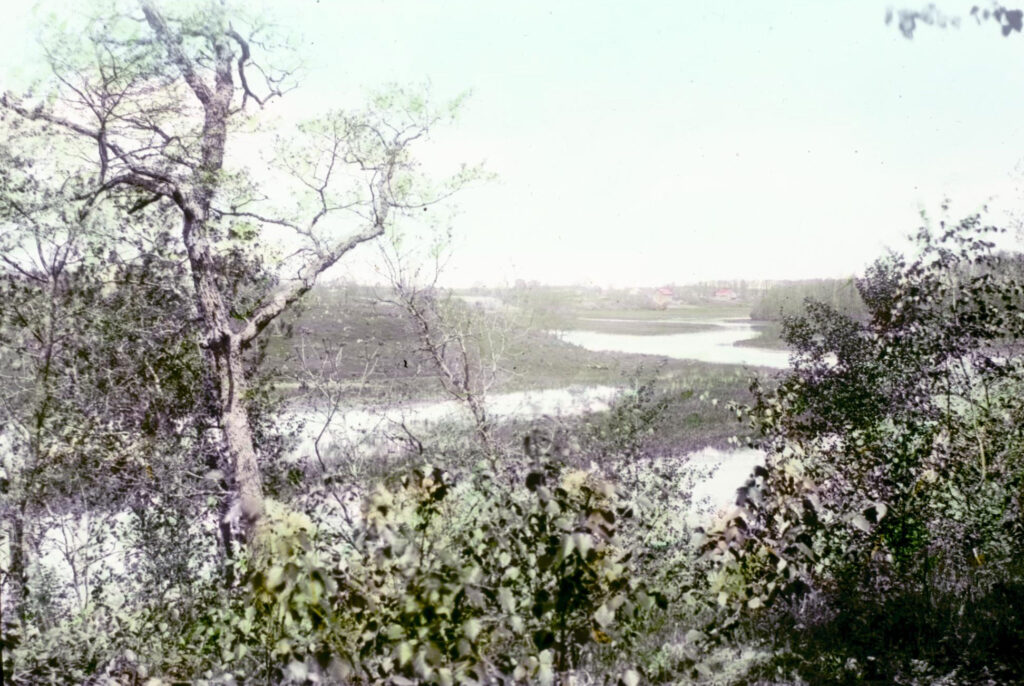
Also around 1890, Jacobs expanded the recreational piece by building a picnic area and dance hall on the island and began operating a 60-passenger sternwheeler steamboat up the Pike River from downtown to the site. The steamboat was named Reyonnep (Pennoyer spelled backwards, in honor of his friend, Dr. Pennoyer).
In the summer of 1902, Kenosha industrialist Zalmon G. Simmons organized a tour of the Jacobs Island area for officials from the U.S. Navy. At the time, the Navy was looking for a 100- to 200-acre site, with a half-mile of Lake Michigan frontage, for a training facility to house up to 2,000 men.
According to a Kenosha Telegraph-Courier article dated Nov. 26, 1903, the Jacobs Island site was acceptable, but the adjoining marshy areas were a problem, and the site was eliminated from consideration. In the end, Lake Bluff, Ill., beat out Milwaukee and Racine along with Muskegon, Mich., and Michigan City, Ind. Today’s Great Lakes Naval Station, between Lake Bluff and North Chicago, Ill., covers 1,932 acres and runs 18 miles inland.
Oh, what could have been, but then Carthage wouldn’t be where it is now.
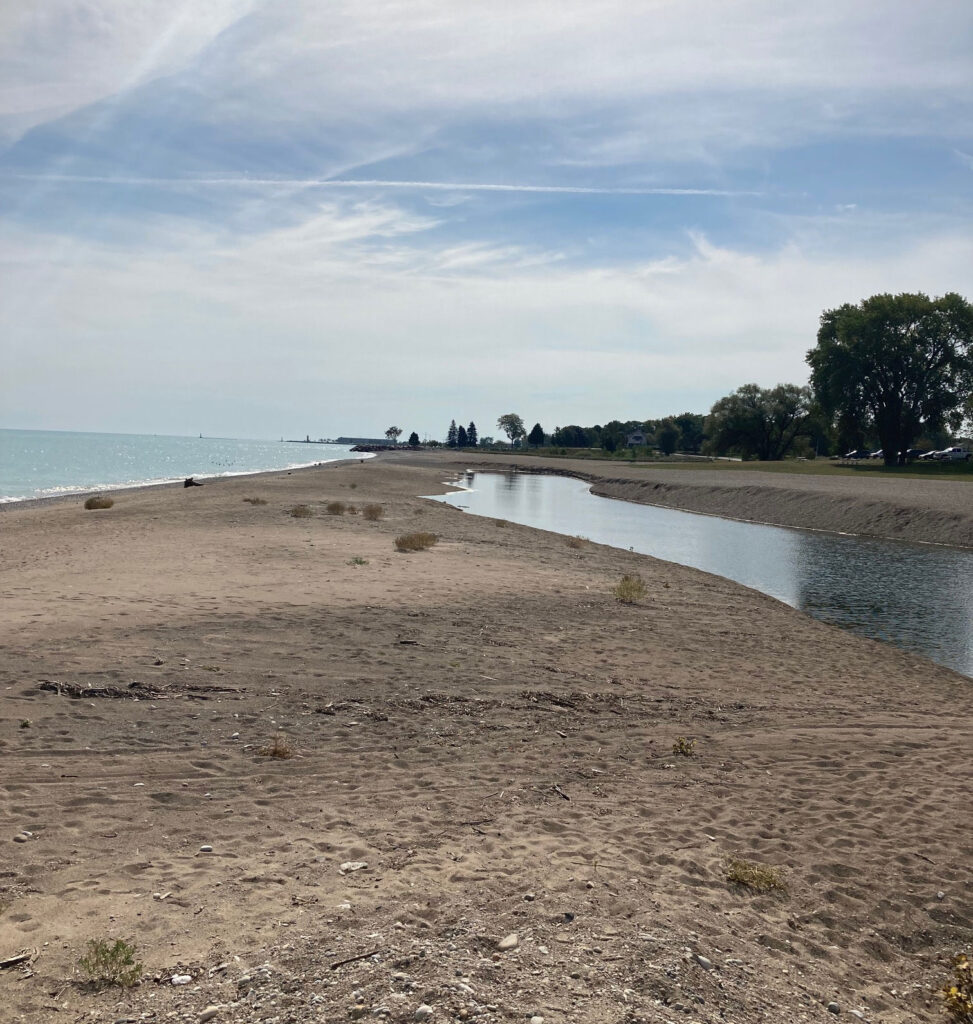
Meanwhile in 1907, Jacobs, ever the entrepreneur, built the Hotel Jacobs on the corner of what is now the southwest corner of 56th Street and Seventh Avenue on land that he owned (for a previous story examining Kenosha’s long-ago hotel history, click here).
The Hotel Jacobs was a unique building with a large turret. From 1918 to 1928, it was known as the City Square Hotel. The building was demolished in 1929 when Seventh Avenue was widened between 56th and 57th Streets. The previous year, 10 landowners petitioned the city to widen the street. Jacobs was presumably not one of the 10 signees.
Jacobs also built a feed warehouse on 54th Street between Sheridan Road and Eighth Avenue. That short block, sometimes numbered 800-820 54th and sometimes as 5403 Sheridan Road, contained two or three buildings.
Jacobs sold his building to the Wisconsin Gas and Electric Company for use as a streetcar barn, while an adjoining building was taken over by The Milwaukee Electric Railroad & Light Company (TMER&L) for garage space. By 1945, the block of buildings was razed for the construction of Barr Furniture Mart, which was then razed in the late 1980s for the 5455 Sheridan Road office building.
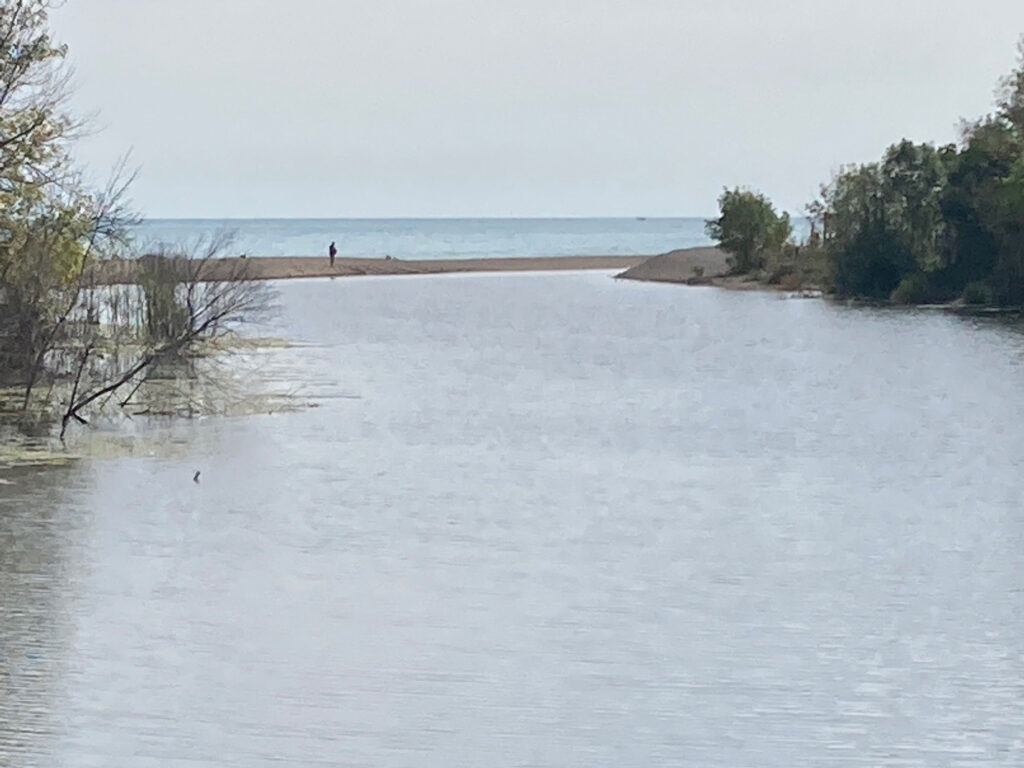
By 1913, the Island Company’s real estate venture had collapsed, presumably due to the swampy nature of the land. In 1916, Peter built a three-bedroom summer home on the bluff overlooking the river that he dubbed “Casselburg.”
Jacobs eventually bought out his nine partners before selling the entire tract in 1924 to A.H. Lance, Walter H. Alford and his wife, Gertrude M. Alford. Walter Alford was a vice president and controller for the Nash Automobile Company. The Alfords presumably bought out Lance’s interest prior to 1928 when the city spent $74,000 to purchase a 124-acre tract, at cost, from the Nash executive to build Alford Park.
Alford lent Casselburg to the Girl Scouts for a summer camp for a couple of years before the house burned down in 1926 when an area child put a match to the structure. Kenosha fire trucks were unable to reach the property across the rickety wooden bridge.
The early-1930s brought an infusion and federal relief funds that were used the transform Kenosha’s north side.
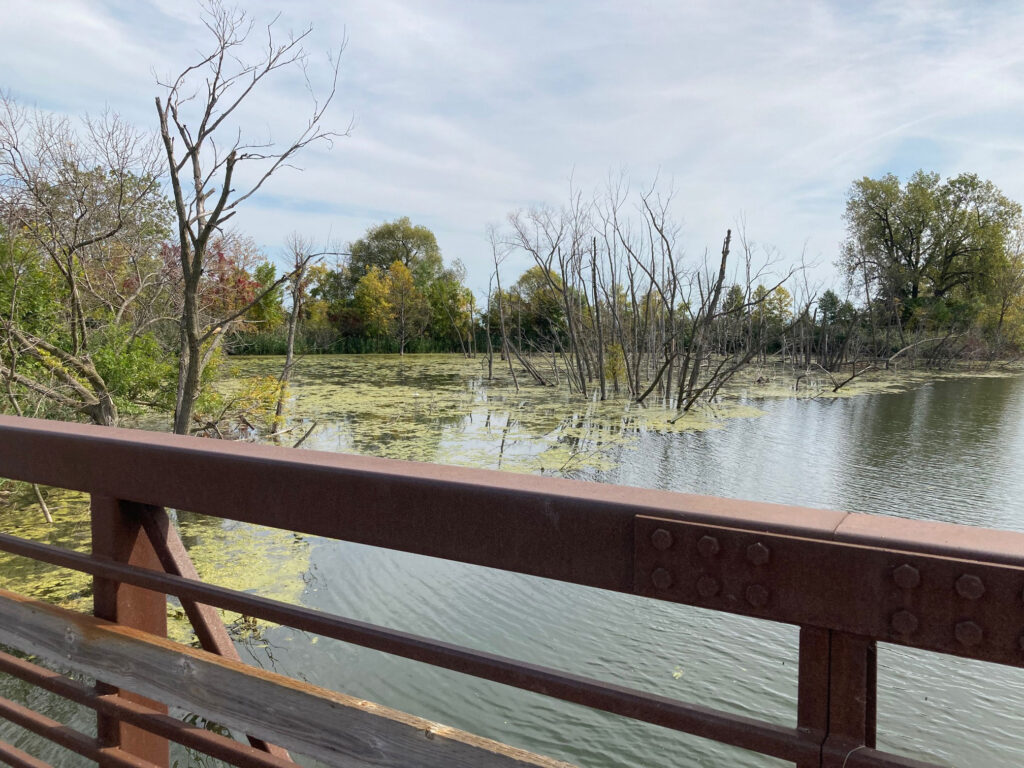
When Highway 32 was constructed north of the city, the Pike River bed was shifted to the west, and the marshy area north of high ground was filled in.
At the time, the present-day parking area along the lake was wooded, as was the entire highway right-of-way. As a result of landfill work, the east side of the island became a 40-foot vertical cliff, which the lake eventually wore down until an area as wide as a city block was lost to the lake.
Jacobs’ wooden bridge may have survived until the early-1930s. The Highway 32 bridge, just east of Seventh Avenue and La Fogata, was constructed in 1934 and then replaced in 2005 as part of a highway reconstruction project between Kenosha and Racine. The east and west sections of Alford Park, which include most of the Island Company tract, also opened in 1934.
Jacobs died in Kenosha in October 1946 at the age of 92.
On May 16, 1957, the city council approved a $50,000 sale of 66 acres on the north end of Alford Park to Carthage for future construction of the college. The $50,000 was donated by a group of Kenosha businessmen.
In 2010, when Carthage needed room for additional residential space, the city leased Alford Park Picnic Area No. 5 to the college as the site of Carthage’s Oaks Residential Village, which opened in 2012. The former picnic area was also used to build the Tower Residence Hall in 2018.
Acknowledgements
- The City of Kenosha and Kenosha County, published by S.J. Clarke Publishing Company, 1916
- “Evolution: Jacobs Island to Alford Park,” by Elizabeth Flett Felten for the Kenosha County Historical Society, date unknown
- “Quaint Bridge led to an Island” by Diane Giles in the Kenosha News, Jan. 4, 2011
- “Kenosha was Under Consideration for Great Lakes Naval Base,” by Diane Giles in the Kenosha News, Feb. 17, 2015
- Jacobs’ Business Ventures Include Hotel,” by Diane Giles in the Kenosha News, July 29, 2016
- Jacobs Island was One of Three Along the Shore North of Pike Creek,” by Diane Giles in the Kenosha News, date unknown
- Special thanks to the Kenosha History Center for photos and for its Aug. 25, 2018 and May 24, 2020 Facebook posts on Jacobs Island
